Getting your car up and running again after a jump start can be a relief, but it’s essential to follow a few steps to ensure everything is in order. Whether you’re dealing with a dead battery due to the cold weather, leaving your lights on, or an aging battery, knowing what to do after the jump can help prevent future issues.
- 1. Keep the Engine Running
- 2. Check Your Battery and Connections
- 3. Turn Off Unnecessary Electronics
- 4. Drive Your Car Regularly
- 5. Monitor Battery Performance
- 6. Seek Professional Help if Needed
- 7. Keep a Jump Starter Handy
- 8. Understand the Cause of the Battery Failure
- 9. Schedule a Battery Test
- 10. Maintain Regular Vehicle Checks
- 11. Educate Yourself on Battery Maintenance
- 12. Invest in Quality Products
- 13. Stay Prepared for the Unexpected
- 14. Know When to Seek Help
- 1. Turn Off All Electrical Components
- 2. Disconnect the Jumper Cables Safely
- 3. Let Your Car Run
- 4. Check for Warning Lights
- 5. Test the Battery and Charging System
- 6. Inspect Battery Connections
- 7. Monitor Battery Performance
- 8. Consider Professional Help
- 9. Keep Jumper Cables Handy
1. Keep the Engine Running
Once your car has started, keep the engine running for at least 20 to 30 minutes. This allows the alternator to recharge the battery sufficiently. If you have to drive somewhere, take the opportunity to drive around for a while instead of just idling. This helps ensure that the battery gets the necessary charge.
2. Check Your Battery and Connections
After the jump start, inspect your battery and the connections carefully. Look for:
- Corrosion: Check for white, ashy buildup around the battery terminals. If found, clean it off with a mixture of baking soda and water.
- Loose Connections: Ensure that the cables are tightly connected to the battery terminals. Loose cables can lead to recurring problems.
- Battery Condition: Look for any signs of swelling or leaks. If the battery appears damaged, it might need to be replaced.
3. Turn Off Unnecessary Electronics
If you had any lights, radio, or other electronics on before the jump, turn them off now. This will help reduce the load on the battery while it’s still recovering. Once you’re sure the battery is charged, you can turn them back on.
4. Drive Your Car Regularly
To prevent your battery from dying again, it’s advisable to drive your car regularly—at least once a week. This keeps the battery charged and ensures that the alternator is functioning correctly. If you don’t drive your car often, consider investing in a battery maintainer or trickle charger.
5. Monitor Battery Performance
Keep an eye on how your car starts in the days following the jump. If it struggles to start or shows signs of weakness, it might be time to replace the battery. Most car batteries have a lifespan of around 3 to 5 years, so if yours is nearing that age, a replacement might be necessary.
6. Seek Professional Help if Needed
If you’re unsure about the condition of your battery or if your car continues to have starting issues, consult a professional mechanic. They can perform a thorough diagnostic check and recommend any necessary repairs or replacements.
7. Keep a Jump Starter Handy
For peace of mind, consider keeping a portable jump starter in your car. These devices are handy and can jump your car without needing another vehicle. They are especially useful in emergencies and can save you time and hassle.
Jumping your car can be a straightforward process, but ensuring that you take the right steps afterward is crucial for maintaining your vehicle’s health. By following these guidelines, you can help prevent further battery issues and keep your car running smoothly. Remember, a little prevention goes a long way in the world of automotive care!
Jumping your car can feel like a small victory, but it’s crucial to ensure your vehicle is truly back in action. Follow these essential steps to maintain your car’s health and functionality after a jump start.
8. Understand the Cause of the Battery Failure
After successfully jump-starting your vehicle, it’s essential to investigate why the battery died in the first place. Common reasons include:
- Old Battery: Batteries typically last 3-5 years. If yours is within this age range, consider having it tested.
- Parasitic Drain: This occurs when electrical components continue to draw power even when the car is off. Check for lights left on or malfunctioning electronics.
- Faulty Charging System: If your alternator isn’t working correctly, it won’t recharge your battery while you drive. A mechanic can check this for you.
9. Schedule a Battery Test
To ensure your battery’s health post-jump start, schedule a battery test at your local auto shop. They can check the charge capacity and condition of the battery, giving you a clearer picture of whether a replacement is necessary.
10. Maintain Regular Vehicle Checks
Regular maintenance is key to avoiding future issues. Here’s what to keep an eye on:
- Fluid Levels: Ensure oil, coolant, and other fluids are at proper levels.
- Battery Terminals: Clean and tighten battery terminals regularly to prevent corrosion and ensure good connections.
- General Tune-Up: Schedule routine tune-ups to keep your vehicle in optimal condition.
11. Educate Yourself on Battery Maintenance
Understanding how to care for your battery can extend its life. Familiarize yourself with:
- Battery Cleaning: Regularly clean battery terminals to avoid buildup.
- Temperature Effects: Know how extreme temperatures can affect battery performance and lifespan.
12. Invest in Quality Products
If your battery needs replacing, consider investing in a high-quality battery and cables. Look for reputable brands and check reviews to ensure you’re making a wise investment. A good battery can make a significant difference in reliability.
13. Stay Prepared for the Unexpected
Prepare for future battery issues by keeping an emergency kit in your vehicle. Include:
- Jumper cables
- A portable jump starter
- A flashlight
- Basic tools for minor repairs
14. Know When to Seek Help
If you find yourself frequently needing to jump your car, it may be time to consult a professional. Persistent issues can indicate deeper problems with your vehicle’s electrical or charging system that require expert attention.
Jumping your car is just the beginning of ensuring its reliability. By taking proactive steps, understanding the underlying issues, and maintaining regular checks, you can keep your vehicle in top shape and avoid the stress of unexpected breakdowns. Remember, a well-maintained car not only saves you time but also keeps you safe on the road.
Jumping your car is often a necessary step when your battery is dead, but it’s important to follow up with the right actions to ensure your vehicle remains in good condition. Here’s a detailed guide on what to do next.
1. Turn Off All Electrical Components
Before disconnecting the jumper cables, make sure to turn off all electrical components in your car. This includes headlights, radio, air conditioning, and any other accessories. Doing so will help prevent any surges that could damage your electrical system.
2. Disconnect the Jumper Cables Safely
Once your car is running, carefully remove the jumper cables in the reverse order of how you connected them:
- Remove the negative cable from the grounded car first.
- Next, remove the negative cable from your car.
- Remove the positive cable from the car that was jumped.
- Finally, remove the positive cable from your car.
3. Let Your Car Run
After a successful jump, allow your car to run for at least 15-30 minutes. This helps the alternator recharge the battery. If possible, take your car for a drive, as this can help maintain battery health.
4. Check for Warning Lights
Keep an eye on your dashboard for any warning lights that might indicate an issue. If you see the battery warning light or any other indicator, it may be time to consult a mechanic.
5. Test the Battery and Charging System
Consider having your battery and charging system tested. Many auto parts stores offer free battery testing services. This will help determine if your battery is still healthy or if it needs to be replaced.
6. Inspect Battery Connections
Check your battery terminals for any signs of corrosion or looseness. Clean the terminals if needed and ensure that connections are tight. Corroded terminals can lead to repeated battery problems.
7. Monitor Battery Performance
Over the next few days, pay attention to how your vehicle starts. If you notice that it struggles to start again, it might be time to replace the battery.
8. Consider Professional Help
If your vehicle continues to have issues after jumping it, or if it won’t start again, seek professional help. There may be underlying issues with the electrical system or the alternator that need addressing.
9. Keep Jumper Cables Handy
Always keep a set of jumper cables in your car. This ensures you are prepared for future battery issues and can assist others if needed.
Regular maintenance is crucial for avoiding future battery problems. Schedule routine check-ups to ensure all systems are functioning correctly.
Jumping your car is a temporary solution to a dead battery, but taking the right steps afterward can prevent future issues and keep your vehicle running smoothly. By following these guidelines, you can ensure that your car remains in good health and ready for the road ahead.
This HTML code presents a structured article that outlines steps to take after jumping a car. It includes headings, paragraphs, and lists for clarity and organization, styled for readability.

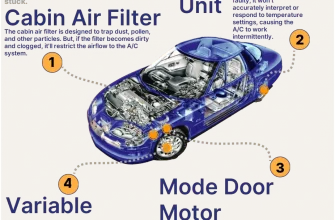
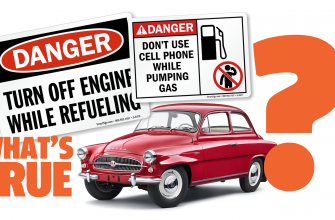
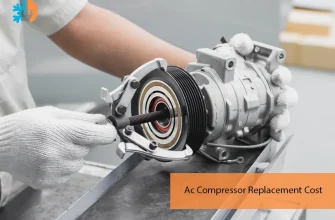


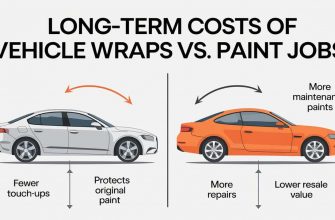
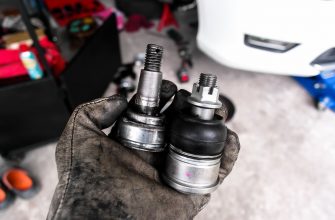
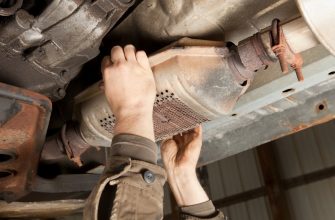
I appreciated the detailed steps on checking the battery and connections. It really gave me confidence to handle my car issues better!
Great information on battery maintenance. The advice about investing in a trickle charger is something I’ll definitely consider now.
The section about monitoring battery performance is so crucial. I’ve had issues in the past and this will help me stay proactive.
This article is incredibly helpful! I never knew how important it was to keep the engine running after a jump start. Great tips!
Fantastic advice on turning off unnecessary electronics! I always forget that part, and it’s good to be reminded.
I love how clear and concise this article is. It’s perfect for someone like me who isn’t very car-savvy but wants to learn more.
This guide has made me feel so much more prepared for future car troubles. Thanks for sharing these essential tips!
Driving regularly is such a simple yet effective tip. I didn’t realize how much it could help my battery life!